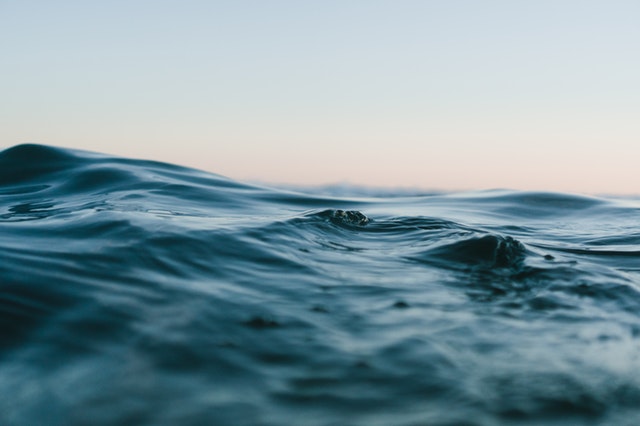Executive Summary
Constructive journalism or constructive news is a response to increasing tabloidization, sensationalism and negativity bias of the news media today. It is an approach that aims to provide audiences with a fair, accurate and contextualised picture of the world, without over-emphasising the negative. While a healthy dose of pessimism in the press is undoubtedly necessary, the chronic over- exposure of negativity constitutes a hidden media bias that has an erosive effect on the societies we live in. Employing this concept will thus also help to create an “antithesis” to the often too complex and depressing nature of water reporting – thereby working against audience apathy.
Introduction
The aim of constructive journalism is to combat the trivialisation and degradation of journalism by media that often is more interested in entertaining and creating controversies than informing the public. Constructive journalism is calm in tone, as it is less focused on scandals, conflicts and outrage. It reports on important societal issues, setting them in the bigger picture and in their relevant context. This approach seeks to facilitate public debate not only around important problems, but also around possible solutions, ultimately improving the quality and tone of public discussions. It is “two-eyed journalism”, balanced reporting on both the good and the bad in society. Constructive journalism takes journalism’s democratic function seriously, building on the idea that journalism is a feedback mechanism that helps society self-correct.
Constructive journalism is therefore especially apt when it comes to topics like health, water, agriculture or other important social issues as an adequate technique to change the angle of typical reporting, which tends to focus on the problems concerning these topics (e.g. water shortage in.., drought in..., crop failure in..., flood in...). Instead of following the old journalist saying, “If it bleeds, it leads”, constructive journalism teaches how to find stories that show a solution for existing problems.
First surveys have proven that the implementation of constructive journalism helps to regain the audience’s trust in the media. The method is easy to learn and to adapt for journalists from all levels of experience and will make a significant difference in the quality of water reporting in the Middle East.
How to…?
Constructive journalism is an approach; it is more about how we report rather than what we report. How to create engaging journalistic coverage, when you stop seeing the world through a victimizing lens. How to win the World Press Photo by taking photographs that portrays hope and meaning amidst war and chaos. Instead of only reporting the issues, with constructive journalism the journalist also addresses what the consumer can do with the information. What can I do to change it?
According to the Danish journalist Cathrine Gyldensted, the Canadian family systems therapist Karl Tomm's four types of therapeutic questioning can be adopted into an interview approach that can also be used by journalists. Tomm's original framework provides four types of questions a therapist can use in psychotherapy sessions to bring about positive therapeutic outcomes from clients. By using the same model in journalism, similarly constructive answers could be obtained from the interviewee.
Linear Questions ("The Detective"):
Basic investigative questions that deal with "Who did what?, Where?, When?, and Why?". This type of questions helps discover the factual aspect of the problem or issue.
Circular Questions ("The Anthropologist"):
This type of questions discovers relevant contextual perspective behind the facts. Examples: "How did this affect you (or other things/people/etc.)?" and "What is your explanation for A or B?".
Reflexive Questions ("The Future Scientist"):
In reflective questions, the interviewer suggests a new perspective on a given topic, thereby nudging the interviewee to reflect on a new possibility of constructive solutions to the problem or issue. Examples: "What do you think A believes, when he is in that situation?", "How would you approach this problem?", and "What action should be taken in order to do A or B?"
Strategic Questions ("The Captain"):
Directs the interviewee into commitment of the solution. Examples: "What should be done?", "Will you do it?", and "When will you do it?"
This paragraph is based on and mainly quoting from Wikipedia “constructive journalism” and from the writings of Karen McIntyre, a leading teacher and researcher on constructive journalism.
Do you want your story to be seen by the world? Our blog is visited by many water and sanitation experts around the world.
Contact us if you want to share your story!
Constructive Water Reporting in the Middle East - Media Strategy for the Blue Peace Middle East Initiative
This document captures challenges in water related reporting in the Middle East and lays out strategic approaches and a range of activities to foster constructive water reporting in the region.
MiCT and seecon (2017): Constructive Water Reporting in the Middle East - Media Strategy for the Blue Peace Middle East Initiative. Berlin, Germany: Media in Cooperation and Transition gGmbH and seecon GmbH PDFWikipedia: Constructive Journalism
karenmcintyre.org
Karen McIntyre is a leading teacher and researcher on constructive journalism.
http://karenmcintyre.org/ [Accessed: 01.02.2018]Karen McIntyre is a leading teacher and researcher on constructive journalism.
Constructive News: How to save the Media and Democracy with Journalism of Tomorrow
This revised second edtion on constructive news challenges the traditional concepts and thinking of the news media. It shows the consequences media negativity has on the audience, public discourse, the press and democracy as a whole. The book also explores ways to change old news habits and provides hands-on guidelines on how to do so.
HAAGERUP, U. (2017): Constructive News: How to save the Media and Democracy with Journalism of Tomorrow. Aarhus University Press URL [Accessed: 14.02.2018]

